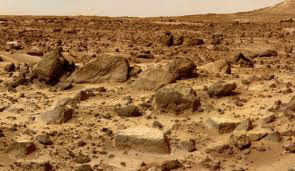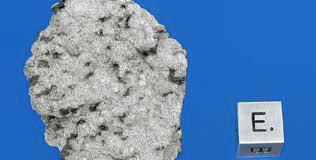|
|

For The First Time In 50 Years
Scientists Confirm Discovery Of Rocks That Fell To Earth From Mars

WASHINGTON — They came from Mars, not in peace, but in pieces.
Scientists are confirming that 15 pounds of rock collected recently in Morocco fell to Earth from Mars during a meteorite shower last July.
This is only the fifth time in history scientists have chemically confirmed Martian meteorites that people witnessed falling. The fireball was spotted in the sky six months ago, but the rocks weren’t discovered on the ground in North Africa until the end of December.
This is an important and unique opportunity for scientists trying to learn about Mars’ potential for life. So far, no NASA or Russian spacecraft has returned bits of Mars, so the only samples scientists can examine are those that come here in a meteorite shower.
Scientists and collectors are ecstatic, and already the rocks are fetching big bucks because they are among the rarest things on Earth — rarer even than gold. The biggest rock weighs over 2 pounds.
“It’s Christmas in January,” said former NASA sciences chief Alan Stern, director of the Florida Space Institute at the University of Central Florida. “It’s nice to have Mars sending samples to Earth, particularly when our pockets are too empty to go get them ourselves.”
A special committee Tuesday of meteorite experts, including some NASA scientists, confirmed test results that showed the rocks came from Mars, based on their age and chemical signature.
Astronomers think millions of years ago something big smashed into Mars and sent rocks hurtling through the solar system. After a long journey through space, one of those rocks plunged through Earth’s atmosphere, breaking into smaller pieces.
Most other Martian meteorite samples sat around on Earth for millions of years — or at the very least, decades — before they were discovered, which makes them tainted with Earth materials and life. These new rocks, while still probably contaminated because they have been on Earth for months, are purer.
The last time a Martian meteorite fell and was found fresh was in 1962. All the known Martian rocks on Earth add up to less than 240 pounds.
The new samples were scooped up by dealers from those who found them. Even before the official certification, scientists at NASA, museums and universities scrambled to buy or trade these meteorites.
“It’s incredibly fresh. It’s highly valuable for that reason,” said Carl Agee, director of the Institute of Meteoritics and curator at the University of New Mexico. “This is a beauty. It’s gorgeous.”
Meteorite dealer Darryl Pitt said he is charging $11,000 to $22,500 an ounce and has sold most of his supply already. At that price, the Martian rock costs about 10 times as much as gold.
One of the key decisions the scientists made Tuesday was to officially connect these rocks to the fiery plunge witnessed by people and captured on video last summer. The announcement and the naming of these meteorites — called Tissint — came from the International Society for Meteoritics and Planetary Science, which is the official group of 950 scientists that confirms and names meteorites.


